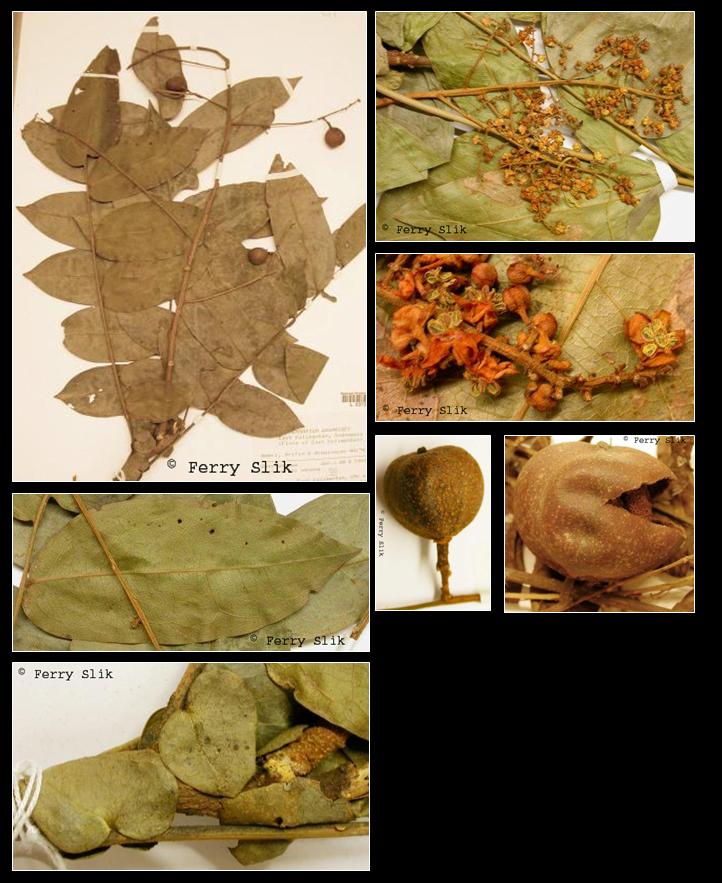Lepisanthes amoena (Hassk.) Leenh., Blumea 17 (1969)
Latin for 'lovely'.Synonyms
Capura spectabilis (Blume) Teijsm. & Binn.
Melicocca amoena Hassk.
Otolepis amoena (Hassk.) Kuntze
Otolepis cordigera (Radlk.) Kuntze
Otolepis imbricata (Blume) Kuntze
Otolepis pubescens (Blume) Kuntze
Otolepis spectabilis (Blume) Kuntze
Otophora amoena (Hassk.) Blume
Otophora confinis Blume
Otophora cordigera Radlk.
Otophora imbricata Blume
Otophora pubescens Blume
Otophora spectabilis Blume
Otophora spectabilis var. pubicosta Blume
Otophora styligera Radlk.
Schleichera amoena (Hassk.) Walp.
Description
Shrub up to 10 m tall and 15 cm dbh. Stipules absent, but large leaf-like
pseudo-stipules present (i.e. they are attached to the leaf base, not to the
twig). Leaves alternate, compound, leaflets penni-veined, hairy to glabrous,
often with slightly cordate base. Flowers ca. 6 mm diameter, white-yellow-red,
placed in panicles. Fruits ca. 23 mm diameter, yellow-red-brown, drupes.
Ecology
In undisturbed mixed dipterocarp, keranga, swamp and sub-montane forests up
to 1200 m altitude. No clear habitat preference, found on alluvial sites, along
rivers and streams, on hillsides and ridges. On sandy to clay soils. In
secondary forests usually present as a pre-disturbance remnant.
Uses
Ornamental tree. The bark and young leaves are used to treat ulcers. The
fruits are edible. The wood is very hard.
Distribution
Peninsular Malaysia, Sumatra, Java, Lesser Sunda Islands, Borneo (throughout
the island).
Local names
Borneo: Buah matahari, Kalansua, Songbum.
Indonesia: buah sobo (Palembang), kelampa sowa (Malay), langir (Sundanese).
Malaysia: kayu mata hari.
